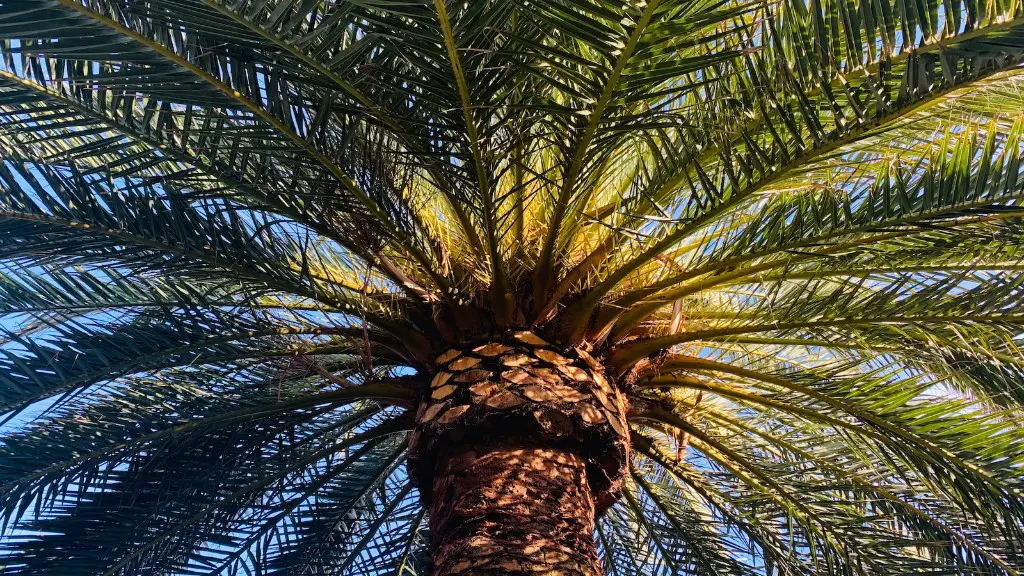Watering
Caring for a cherry blossom bonsai tree properly requires frequent watering. Ideally, the tree should be watered as soon as the soil in the pot feels dry to the touch. This tends to be anywhere from once every two to five days, depending on the temperature and climate. To make sure the soil is not over-saturated, water slowly and steadily for 2-4 minutes. The quantity of water should double the size of the pot. If the soil does not absorb the amount of water given, it’s a sign that the tree is already brimmed with water. To be sure that the tree is watered enough, place a saucer underneath the pot and fill it with water. This will allow a slow rate of absorption and also control soil moisture.
Fertilizing
Frequent fertilizing is essential to maintain a healthy cherry blossom bonsai tree. Fertilizers with higher nitrogen levels are ideal as they are essential for the trees lush foliage. However, high nitrogen levels must be monitored as they can negatively impact the tree’s health and growth. Instead, investing in a high phosphate fertilizer will be beneficial as it promotes growth in the roots and increase their overall health. Fertilizing should mainly be done during the spring and summer months as this is when the tree will absorb the nutrients most effectively. Make sure to read the instructions of the fertilizer and check the recommended dosage. When applying, use half the recommended amount and slowly increase the strength.
Repotting
Cherry blossom bonsai trees should be repotted every two to four years. Repotting helps to maintain the tree’s health and can also promote growth. To know when it’s time to repotted the tree, check the bottom of the pots for exposed roots and understand if the tree is looking sickly, half dead or completely healthy. When the tree needs repotting, remove the soil carefully and trim some of the roots. Removing more than one-third of the root ball will be too much and can damage the tree. Once some of the roots are trimmed, use a high quality bonsai soil and repot with it. This kind of soil will help to decrease the growth of weeds and contain the right amount of nutrients that are needed to let the tree thrive.
Pruning
Pruning is a necessary step when it comes to caring for a cherry blossom bonsai tree. Leaves and branches should be pruned regularly to maintain the desired shape of the tree. Pruning should start when the tree is only a few centimetres tall. This will encourage a strong trunk and establish the desired tree shape. During the pruning process, start from the top, take off any extra shoots and end of branches that are overgrown. Additionally, search for dead leaves and branches and carefully remove them as they can cause disease. Pruning should be done at least twice a summer and once in winter to keep the tree healthy and strong.
Light Requirements
Cherry blossom bonsai trees require 4-6 hours of sunlight per day. According to experts, the tree prefers indirect sunlight and should not be kept in prolonged direct sunlight as this can cause sunburst, fading of foliage or branch dieback. Instead, placing the tree in bright light and moving it around periodically to get even amounts of light is the recommended way of providing the light needs.
Protecting from Insects
Keeping insects and pests away from cherry blossom bonsai trees is essential for their health. Insects such as spider mites and aphids can plague the tree and suck out the juice, resulting in yellow and dry leaves. To reduce the number of insects, thoroughly inspect the trees leaves and bark with a magnifying lens. If there is an infestation, spray the leaves with insecticidal horticultural oil or neem oil. Additionally, prevent infestations by using neem oil in a dilute concentration on the tree once a month.
Protecting from Disease
Most cherry blossom bonsai trees are prone to diseases such as armillaria root rot, phytophthora root rot and anthracnose. To prevent diseases, it’s important to ensure that the tree is in good health and well taken care of. This includes inspecting the tree’s soil and roots. Additionally, the tree should be repotted every two to four years and protected from cold temperatures. Providing adequate humidity and good lighting conditions is also essential for disease prevention.
Potting and Soil Requirements
When it comes to potting, it’s important to make sure that the vessel is well draining, free of toxins and the right size. The ideal pot for a cherry blossom bonsai tree is a shallow container as this encourages the tree’s roots to spread. It’s also important to maintain the soil in the pot. This means removing weeds, adding additional compost and fertilizer, and mixing it with mulch. Additionally, the right mixture of soil should be chosen. This can include equal parts of compost, potting compost and fine bark chips. Finally, keep the soil around the tree moist and make sure to perform regular tests to check the condition, roots and nutrients of the soil.
Manipulating Growth
When it comes to taking care of a cherry blossom bonsai tree, manipulating its growth is key for maintaining the desired shape. For this, techniques such as wiring, pruning and plucking new buds is used. Wiring branches helps to maintain a specific shape and style to the tree. As for pruning and plucking, the process should be done regularly, with extra caution to ensure no breakages occur. Furthermore, a cherry blossom bonsai tree should be turned regularly to ensure the foliage on all sides gets enough sunlight.
Healthy Habits and Practices
Maintaining a healthy and thriving cherry blossom bonsai tree is no easy job, which is why it’s important to form healthy practices and habits that will benefit the overall health of the tree. Firstly, it’s essential to find the perfect location for the tree that meets its needs and requirements in terms of sunlight, humidity, moisture and temperature. Secondly, be aware of sudden temperature changes and try to provide protection during colder periods. Thirdly, investing in high quality gardening tools such as pruning shears, gardening scissors and soil testers will be beneficial when it comes to taking care of the tree. Finally, keep the tools used to care for the cherry blossom bonsai tree well maintained and cleaned of any traces of diseases or bacteria.
Design and Styling
The design and styling of a cherry blossom bonsai tree is an art form and requires creativity, knowledge and practice. Firstly, when styling a bonsai tree, the desired shape should be kept in mind. This can include popularly seen styles such as a slanting, upright, informal upright and cascade. Secondly, as the trees trunk needs to strengthen, supporting it is important. This is done by creating a framework made from wires. Additionally, when styling the tree, keeping the branches short and in the desired formation will let the tree have a strong shape. Finally, the leaves should be in the desired pattern, which can be achieved through picking with fingers and tweezer. This can help maintain the design more effectively.
Training a Cherry Blossom Bonsai Tree
Training is a key way of maintaining a cherry blossom bonsai tree and helping it thrive. Firstly, wiring the branches in the desired shape can help elongate the bonsai trees lifespan. This will also help maintain the desired shape and make sure the trellis is strong enough. Secondly, to keep the tree in shape, regular pruning and cutting should be done as this will assist with the styling process. Additionally, providing protection from extreme climates and conditions, as well as frequent trimming of dead and diseased branches is essential to encourage growth. Finally, it’s essential to perform soil tests to make sure the tree is getting the right amount of nutrients, as well as watering the tree regularly to maintain its health.



